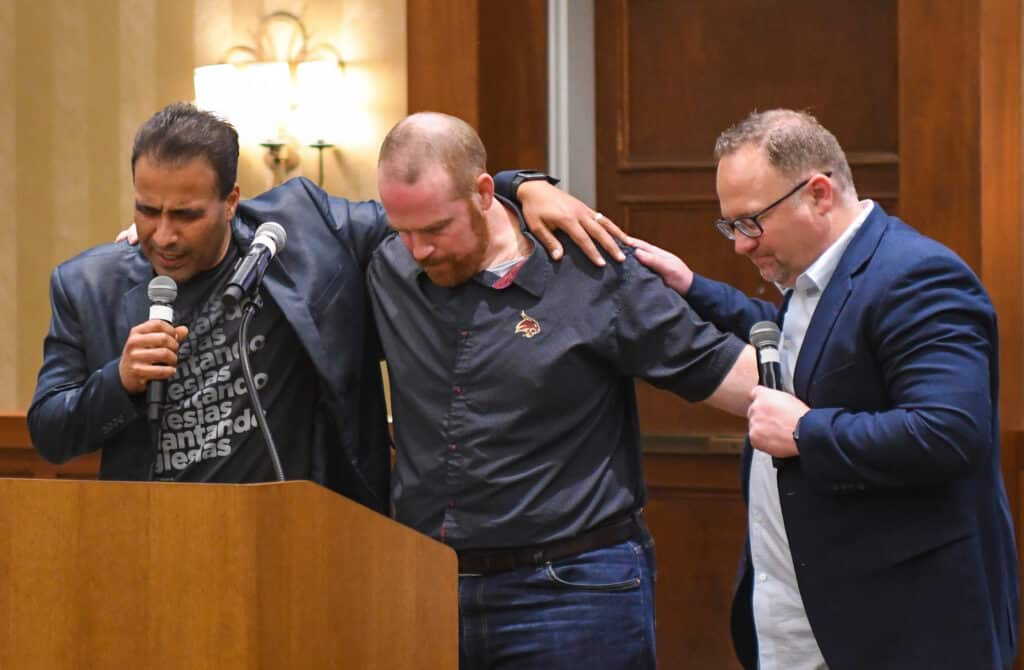Trial still used by some as valid proof that evolution stands up to critical testing.
By Kay Adkins
TEXAN Correspondent
The Scopes “monkey” trial of 1925 did little to settle a matter of justice, but it did set the stage for what would become the most recognized worldview showdown in U.S. trial history. Between the satirical news coverage of the trial and its mythical stage and screen portrayal in the 1960 movie “Inherit the Wind” (a film still often used as an educational tool in schools), the images of ignorant religious zealots still cloud the minds of many.
How did the misdemeanor charges against a little-known teacher named John Scopes become the focal point of media attention that year? How did his trial become the O.K. Corral between evolutionists and creationists, and Christians and agnostics of the day? What evidences were presented by the defense for the case of evolution, and has that evidence endured?
Setting the Stage
The story begins with a Tennessee law–the Butler Act–which forbade public school teachers to teach “any theory that denies the story of Divine creation of man as taught in the Bible.” Enter the newly-formed American Civil Liberties Union [ACLU] to test the law with the intention of having it repealed.
Football coach and math teacher John Scopes had substituted as a biology teacher for two weeks. Through an ACLU newspaper advertisement and the coercion of a prominent Dayton, Tenn., citizen, Scopes was recruited and arrested to become the ACLU pawn. John D. Morris, president of the Institution for Creation Research, states in an online article, “John Scopes, on trial for teaching evolution (contrary to Tennessee law), didn’t actually do so until after the charges had been filed. Then he did so in the back seat of a car, just to be sure he had committed the proper crime.”
Former Secretary of State William Jennings Bryan, a Christian, accepted an invitation to be part of the prosecution team. Bryan had been known since 1904 as an opponent to the theory that man evolved from an ape-like ancestor. In a published oration, “The Prince of Peace” he stated, “The mind is greater than the body and the soul is greater than the mind, and I object to having man’s pedigree traced on one third of him only–and that the lowest third.”
Bryan feared the social implications of Darwin’s theory. In “On The Origin of Species,” Darwin explained his theory of natural selection as being “the preservation of favored races in the struggle for life.” Bryan believed such an understanding would lead to some human races viewing themselves as superior to others. He also feared the spiritual implications, stating, “Because I fear we shall lose the consciousness of God’s presence in our lives.”
Clarence Steward Darrow, an agnostic and one of America’s premier criminal attorneys, volunteered his services to defend Scopes, and to present scientific evidence supporting evolution as well as his own anti-God agenda. After his stringent objections, first to the prayers prior to each day’s proceedings, and then to the court room presence of a Bible with a sign reminding people to read it, Darrow delivered a list of scientists and theologians to testify for the defense. The judge ruled their testimonies to be irrelevant to the charge being tried–that Scopes taught evolution against Tennessee law–but they were allowed to testify outside of the jury’s presence for the benefit of the appellate court.
Evolution Evidence?
Evidences presented at the trial supporting evolution relied heavily on fossils–human or human-like skeletal remains. Kirtley Mather, geology department chair at Harvard, testified:
“There are in truth no missing links in the record that connects man with the other members of the order of primates. Such facts . . . can be explained only by the conclusion that man has been formed through long processes of progressive development, which when traced backward through successively simpler types of life, each living in more remote antiquity, lead unerringly to a single primordial cell.”
Some of the fossil evidences used in the trial have since been discredited, but others are still important to the evolutionist arguments. The Piltdown man, discovered in 1912, was hailed in more than 500 dissertations as a missing link until 1953 when suspicions confirmed it a fake. A human cranium and an orangutan’s jaw had been deliberately joined together. The teeth of the ape had been filed down to give it a more human appearance. Java Man, discovered in 1891, consisted of a human femur, an ape-like skullcap, and three teeth. The skullcap has since been identified as that of an extinct gibbon, and the femur identified as human. The gibbons and humans likely co-existed in the region of the discovery.
Heidelberg Man, Neanderthal Man, and Rhodesian Man, while typically classified as homo sapiens, or fully human, are still important to the evolutionist debate. Some scientists still classify Rhodesian Man (the older of the three) in the sub-human homo erectus species.
In his book “Darwin on Trial,” Berkeley law professor Phillip Johnson concedes that, “there may also have been an intermediate species (homo erectus) that walked upright and had a brain size intermediate between that of modern men and apes.” But noting the fact that scientists cannot explain the “mysterious leaps” necessary “to produce the human mind and spirit from animal materials,” he states, “it is reasonable to keep open that the putative hominid species were something other than human ancestors, even if the fossil descriptions are reliable.”
Another fossil-related assertion made by an expert witness in the Scopes Trial was that, “Fossil remains show clearly that birds evolved from flying reptiles.” Since then the dino-bird theory has taken many blows such as: bird fossil remains that predate reptiles from which birds were to have evolved, birds with features which their alleged ancestors did not possess, and other stark anatomical differences.
In “Darwin on Trial,” Johnson reports that paleontologists had deemed their main dino-to-bird fossil evidence, that of Archaeopteryx, as a “dead end.” But, he said, more recently discovered bird fossil specimens have features that seem to be intermediates between Archaeopteryx and some modern birds. Johnson states, “Possibly birds did somehow develop from dinosaur predecessors, with Archaeopteryx as a way station, but even on this assumption we do not know what mechanism could havd produced all the complex and interrelated changes that were necessary for the transformation.”
Other evidence asserted at the Scopes trial related more to anatomical studies. Vestigial organs, body organs that appear to have no purpose (such as tonsils, and the appendix), had been considered evidence of a distant ancestor to the human race. The trial transcripts state that eh human body has at least 180 vestigial structures. Since then, uses have been noted for almost every one of them. Also, some organs considered to be vestigial do not even exist in some species alleged to be ancestors of humans–a critical error in logic for this argument.
The “biogenetic law,” stating that embryos develop through past life forms in a mother’s womb, was found to be erroneous. For example, what scientists thought were gill slits in a human embryo, they now recognize as the early stages of the middle ear and two glands. What was thought to be a vestigial tail scientists now know to be the tailbone use to support backbones, muscles and our posture.
Drawings used to support the biogenetic law were discovered to be grossly misleading, and unfortunately still turn up in science textbooks. Johnson states, “That embryos actually recapitulate adult ancestral forms–that humans go through fish and reptile stages, for example–was never borne out by the evidence and embryologists quietly discarded it. Nonetheless, the concept was so pleasing theoretically that generations of biology students learned it as fact.”
Guilty Verdict–A Victory for the Defense
The Scopes jury did not hear the expert testimony, but the portion of the trial they did hear amounted to an ambush on faith by the defense. On the seventh day of the trial, Bryan agreed to undergo questioning on the witness stand with the understanding that Darrow would reciprocate. In an article entitled “Scopes Trial Scoop: The Trial Gavel Heard Round the World,” Dr. Richard Cornelius of the Bryan College English Department stated, “For about two hours Darrow hammered away at his Christian counterpart with questions ranging over some fifty topics. Some of Darrow’s questions were impossible to answer: ‘Do you know about how many people there were on this earth 3,000 years ago?'”
Darrow never had to fulfill his end of the bargain. Following Darrow’s interrogation of Bryan, the judge struck Bryan’s testimony from the records. Having no other witness or evidence to present, Darrow conceded his client’s guilt. The jury was charged to render a guilty verdict. For the prosecution, a guilty verdict upheld the law and set a precedent for keeping the theory out of the education system. For the defense, a guilty verdict was the desired opportunity to have the case heard in a higher court.
The Scopes case was taken before the Tennessee Supreme Court, where the conviction was overturned on a technicality, and both sides were asked to not re-file. The trial itself went away quietly, but it is still noted as media victory for evolutionists. According to Cornelius, it was also a catalyst for the founding of more than 100 creationist associations.














